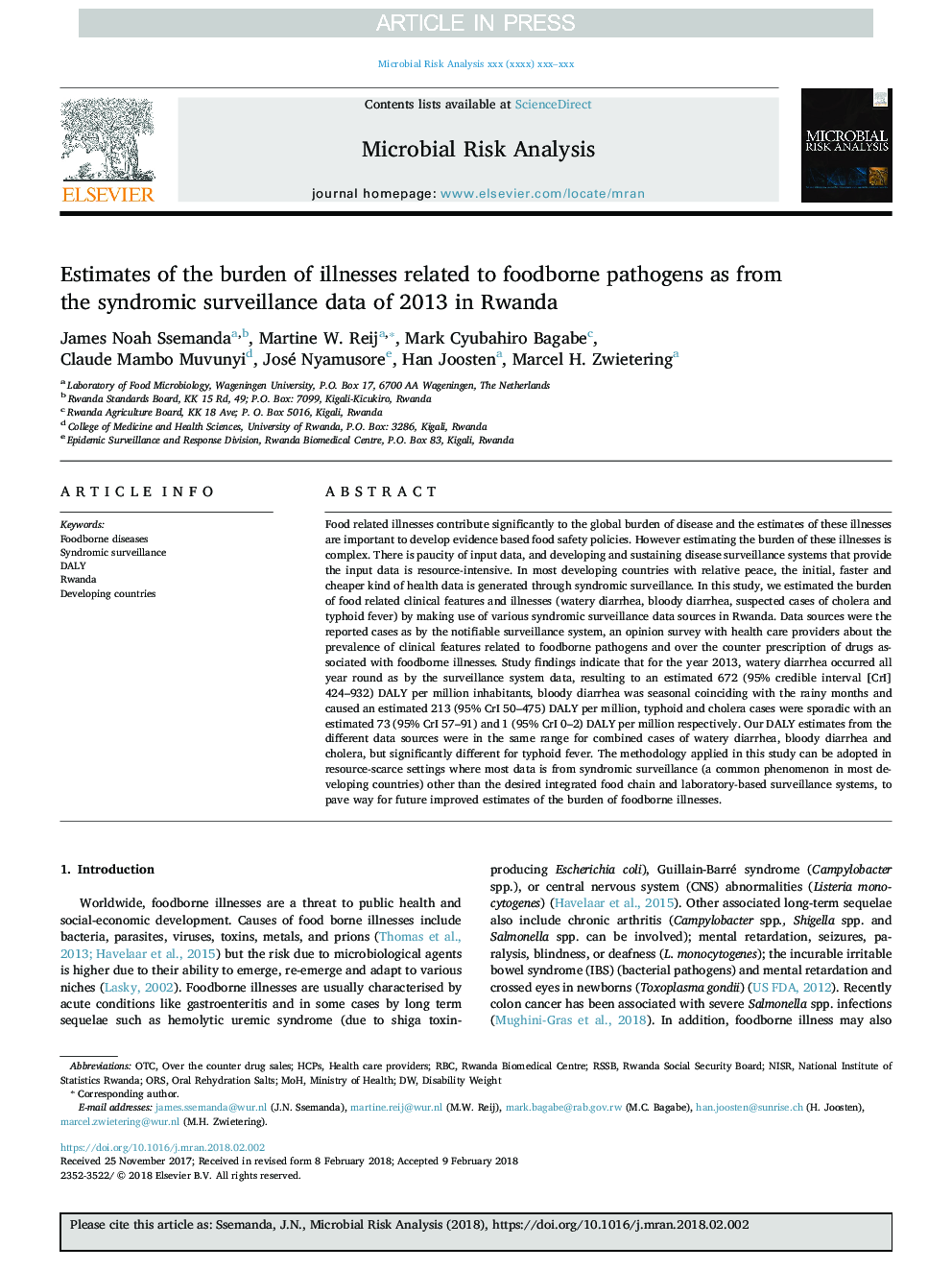| کد مقاله | کد نشریه | سال انتشار | مقاله انگلیسی | نسخه تمام متن |
|---|---|---|---|---|
| 8842824 | 1615859 | 2018 | 9 صفحه PDF | دانلود رایگان |
عنوان انگلیسی مقاله ISI
Estimates of the burden of illnesses related to foodborne pathogens as from the syndromic surveillance data of 2013 in Rwanda
ترجمه فارسی عنوان
برآورد بار بیماریهای مرتبط با پاتوژن های غذایی از داده های نظارتی سندرمی سال 2013 در رواندا
دانلود مقاله + سفارش ترجمه
دانلود مقاله ISI انگلیسی
رایگان برای ایرانیان
کلمات کلیدی
موضوعات مرتبط
علوم زیستی و بیوفناوری
ایمنی شناسی و میکروب شناسی
میکروبیولوژی و بیوتکنولوژی کاربردی
چکیده انگلیسی
Food related illnesses contribute significantly to the global burden of disease and the estimates of these illnesses are important to develop evidence based food safety policies. However estimating the burden of these illnesses is complex. There is paucity of input data, and developing and sustaining disease surveillance systems that provide the input data is resource-intensive. In most developing countries with relative peace, the initial, faster and cheaper kind of health data is generated through syndromic surveillance. In this study, we estimated the burden of food related clinical features and illnesses (watery diarrhea, bloody diarrhea, suspected cases of cholera and typhoid fever) by making use of various syndromic surveillance data sources in Rwanda. Data sources were the reported cases as by the notifiable surveillance system, an opinion survey with health care providers about the prevalence of clinical features related to foodborne pathogens and over the counter prescription of drugs associated with foodborne illnesses. Study findings indicate that for the year 2013, watery diarrhea occurred all year round as by the surveillance system data, resulting to an estimated 672 (95% credible interval [CrI] 424-932) DALY per million inhabitants, bloody diarrhea was seasonal coinciding with the rainy months and caused an estimated 213 (95% CrI 50-475) DALY per million, typhoid and cholera cases were sporadic with an estimated 73 (95% CrI 57-91) and 1 (95% CrI 0-2) DALY per million respectively. Our DALY estimates from the different data sources were in the same range for combined cases of watery diarrhea, bloody diarrhea and cholera, but significantly different for typhoid fever. The methodology applied in this study can be adopted in resource-scarce settings where most data is from syndromic surveillance (a common phenomenon in most developing countries) other than the desired integrated food chain and laboratory-based surveillance systems, to pave way for future improved estimates of the burden of foodborne illnesses.
ناشر
Database: Elsevier - ScienceDirect (ساینس دایرکت)
Journal: Microbial Risk Analysis - Volume 9, August 2018, Pages 55-63
Journal: Microbial Risk Analysis - Volume 9, August 2018, Pages 55-63
نویسندگان
James Noah Ssemanda, Martine W. Reij, Mark Cyubahiro Bagabe, Claude Mambo Muvunyi, José Nyamusore, Han Joosten, Marcel H. Zwietering,
